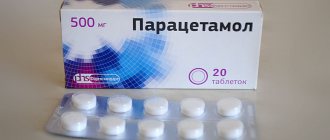Helminthiasis is a serious parasitic disease that affects not only people, but also animals. Helminth eggs hide in places that people and animals do not avoid: grass, food (especially poultry, animals and fish), soil. Even air and water can be enriched with parasite eggs. To eliminate the possibility of infection, you need to monitor not only the health of your body, but also the health of your pets. In particular, cats. It is important to be able to recognize the symptoms and know what to give your cat for worms.
How often should anthelmintics be used for dogs and cats?
1.
According to the WSAVA, dogs and cats are best dewormed quarterly.
2.
If your region is unfavorable for dirofilariasis, then during the flight of mosquitoes, monthly medications are used to prevent this disease (Stronghold, Advocate, Milbemax, etc.). It is possible to replace them with prolonged macrocyclic lactones, but we do not sell them yet.
3.
If the dog is a herding dog, then deworming with praziquantel-containing drugs once a month is advisable. (This figure has been confirmed many times in experiments). This is a matter of the safety of the health of the surrounding people and the herd, and not the health of the dog itself.
4.
Indoor cats, if they follow a diet without raw fish, products of slaughterhouse origin, mice and there are no walking animals (for example, dogs) in the house or other sources of fleas, can be dewormed once every 6 months. (this is my personal opinion), and sometimes even less often. This applies to adult animals, i.e. older than 8-12 months. This provision does not apply to puppies and kittens.
In this case, we are talking about “blind” prevention, when you do not know whether the animal is infected or not. If there is a specific diagnosis or a specific parasitological situation, then the frequency and drugs are selected individually.
Should owners take prophylactic anthelmintic drugs, such as Decaris?
As for humans, I categorically do not recommend taking medications for prevention. Moreover, “Dekaris”, which can stimulate the immune system, or, when taken repeatedly, cause agranulocytosis (a serious problem with hematopoiesis), which is by no means uncommon. The best prevention of helminthiases is hygiene and nutrition, not pills. This makes us radically different from dogs and cats. If a person has complaints, it is necessary to consult a doctor, undergo diagnosis and treatment. The attitude towards parasites is often determined not by their real danger, which I, of course, do not dispute, but by the fact that they are visible and they are “disgusting”. No one takes antibiotics to prevent leptospirosis, “slow” infections, etc. If you have no complaints: take a standard screening test (“for worm eggs”). There are complaints: get tested according to the complaints. The presence of complaints is what distinguishes us from silent patients - animals.
"Febtal combo"
It is also a broad-spectrum anthelmintic.
Compound.
The active ingredient of "Febtal-combo" is albendazole, which causes paralysis and death of parasites.
Release form.
Polymer bottle 7 or 10 ml with a dosing syringe.
How to use.
Apply once, individually, in the morning feeding with a small amount of food or administered directly into the mouth at the rate of 1 ml of suspension per 1 kg of animal weight.
Before deworming your pet, you do not need to keep it on a diet or use laxatives. And the instructions for some drugs clearly describe how to prepare a suspension from the tablet (in case the cat refuses to take the drug in its “original” form).
Does it make sense to deworm children who are constantly in contact with dogs and cats?
I don’t see the point in prophylactically deworming children like dogs and cats. Although in some areas I would do just that J. Dekaris has already been mentioned above, another option is albendazole. It should be noted that this is a very dangerous thing and the consequences of its use can be disastrous. Compared to some banal pinworms or creepy-looking roundworms, albendazole can sometimes be the worst evil if it is used unreasonably - “blindly”. If we are going to conduct “experiments” on children, then let’s say using some pyrantel or piperazine, for example, because To become infected with cestodes, you still have to try, and as a rule, this is not done with the help of dirty hands. It is worth getting tested and not neglecting hygiene and teaching it. But at the same time, as with any parasitological diagnostic method, you can believe the positive result and take action, and not relax if the result is negative.
Can worms develop resistance to anthelmintics?
There are several proven cases of resistance: piperazine has stopped working. Over several decades, its therapeutic doses for dogs and cats have increased and merged with toxic ones. There are strains of hookworms resistant to pyrantel. For the most part, resistance is passed off as the known fact that drugs are not 100% effective, or other errors - diagnostics, drug selection. When the manufacturer, without blinking an eye, tells you about the resistance of helminths, about the need to alternate medications, as in the story about antibiotics, he is, to put it mildly, disingenuous. In horses and cattle, resistance to some drugs can indeed be a problem.
Does a puppy need to be dewormed monthly until he is one year old?
It depends on what. If we are talking about pyrantel compounds, then for up to 3 months with toxocariasis, you will have to deworm it even more often - every 2 weeks, then monthly, and so on until 6-8 months of age, depending on the regimen.
The fact is that drugs containing pyrantel (and the vast majority of them on the Russian market) act exclusively in the intestinal lumen, and primarily against helminths such as Toxocara, Hookworm and Toxascaris. We are not talking about others, because... they are less common. The development cycle of the same Toxocara provides for it to migrate from the intestine through the liver and lungs, after which it enters the intestine, where it becomes an adult. So, pyrantel acts on adults, but does not affect migrating larvae. The drug itself remains in therapeutic doses in the body for approximately the same amount of time as the food that entered the body, i.e. within 12 hours. After 12 hours, the drug leaves the body and the animal is again ready for infection. Moreover, within a couple of hours after the drug is excreted, dozens of larvae that have completed their migration may enter the intestine. In just 5 days they will lay eggs and the control test will be positive, as if nothing had happened. Therefore, puppies and kittens are dewormed as often as possible when it comes to the use of pyrantel-containing drugs. As mentioned above - for the smallest puppies every 14 days, for kittens every 21 days.
As the animal matures, the success of full migration of Toxocara larvae in dogs decreases. Therefore, animals are dewormed less and less often. Adult dogs (over 8-12 months) practically do not support the complete migration of Toxocara, so they are rarely dewormed - at 3 months.
"Alben S"
This is a complex-action drug that is designed for the treatment and prevention of helminthiases caused by round and tapeworms.
Compound.
The active ingredients are albendazole and praziquantel, which provide the complex effect of Albena S. The drug is used for the treatment and prevention of a wide range of diseases caused by helminths. Albendazole and praziquantel affect most stages of the development of roundworms and tapeworms that parasitize cats.
Release form.
The drug is available in the form of flat tablets, each of which is designed for 5 kg of animal body weight. For ease of use, one dose can be divided into two. For this purpose, there is a line mark on each tablet.
Features of use. "
Alben S" is not recommended for deworming in pregnant and lactating cats, as well as in kittens under 3 months of age.
How do you recommend deworming puppies, if not pyrantel, and how often?
If a puppy is without fleas and does not go outside yet, then his mother and himself should be treated with, say, “Advocate”, “Stronghold” - this solves the problem of toxocara well. It is necessary to take into account age restrictions and whether his mother is feeding him milk. This treatment should be done once a month. If your wallet doesn’t allow it, ivermectin is given orally or injected to the entire litter (don’t forget about the age restrictions!). Milbemax is somewhat less effective, but it can be used from a very early age. It is better to use drugs containing pyrantel with adults who are not pregnant (male dogs, for example) precisely for prevention - it is convenient, cheap and highly safe.
For selections in shelter conditions, you have to choose cheaper schemes. If a puppy or kitten is picked up from the street, the first deworming should not be carried out immediately when the animal gets home, in the very first days. It is best to fatten him first, give him vitamins, then something containing pyrantel, and then ivermectin.
Prevention of helminthic infestations
It's no secret that any disease (including feline helminthiasis) is easier to prevent than to treat. In addition, it should be remembered that the helminths that infect cats can easily infect humans. To do this, it is not at all necessary to kiss the purr: there are worm larvae on the fur of sick animals. So you need to protect your cat from a dangerous disease, including for your own safety.
To prevent helminthic infestations in cats it is necessary:
- keep the house clean: regularly wash the floor at the front door, clean door mats, put shoes out of reach of the cat;
- wash your hands before cuddling your cat after returning home from the street;
- do not feed your cat raw meat or fish; it is also better to give boiled or filtered water;
- keep your pet's toilet clean: excrement must be removed immediately, and not only change the filler, but also wash the tray itself;
- If possible, do not let the cat go outside;
- install mosquito nets on the windows to prevent flies and mosquitoes from entering the apartment;
- every three months to prevent infection, use anti-parasite products (not only worms, but also fleas and ticks).
Following these simple rules will reduce to a minimum the likelihood of a cat (and therefore its owners) becoming infected with worms.
What can a dog become infected with when fed (raw) meat? And how can this be dangerous for humans?
By the word “meat” I mean, first of all, products of slaughterhouse origin, this includes pure meat, liver, and lungs. The fact is that, as a rule, if an animal is fed raw meat, then it is probably fed the rest. In general, you can specifically ask the owner about each type of product, but I don’t see much point in this.
The meat may contain Toxocara larvae, less commonly cestode larvae. Trichinosis is not of great importance for cats and dogs, and with trichinosis everything is more or less in order in terms of examination - pigs are checked, but cows and sheep do not need this. Since we cannot be completely confident in the quality assessment of the meat we purchase, the dog should receive its dose of praziquantel once every 3 months, regardless of whether it is urban or not.
From products of slaughterhouse origin you can get a complete set:
- from pigs - echinococcosis, alveococcosis, taeniasis;
- from cattle – echinococcosis, teniosis;
- from sheep - muscular coenurosis (dogs), echinococcosis, extremely rarely (!) alveococcosis (cats and dogs), teniasis;
- rabbits - alveococcosis, teniosis;
- And also linguatulosis, toxocariasis, etc....
Actually, when they came up with preventive deworming, it was aimed specifically at these “comrades”, because a person becomes an intermediate host, receiving the invasive origin from his animals - predators, which are usually the final hosts. A dog should receive its dose of praziquantel every 3 months, regardless of whether it is a city dweller or not.
. Echinococcosis and alveococcosis are diseases that are controlled by WHO and WSAVA.
Recommended routes of administration and dosage
The best option is when a veterinarian prescribes deworming tablets for your cat. When it is not possible to obtain qualified medical advice, it is worth considering the fact that the dose of the medication is calculated based on the ratio of the dose and the weight of the cat. The individual dosage calculation is indicated in the instructions for use of the medicinal product.
Overdose
Cases of overdose from anthelmintic tablets are quite rare in cats. The risk factor only affects kittens, because it is difficult for them to accurately select the required dose. Signs of overdose:
- Cramps.
- Foaming at the mouth.
- Trembling in the paws.
- Impaired breathing.
In these cases, you need to urgently call your veterinarian.
What do you think about the drug "Profender"?
Most owners think that tablets are a priori better, because... worms in the intestines, the tablet is sent there. “Profender” has been tested on hundreds of cats, starting with my own cat. There were several cases of misfires - this is acceptable because Any even super drug works with about 99% efficiency.
This drug is absorbed from the skin into the blood and kills Toxocara larvae, and then excreted with bile into the intestines and kills adults there. When using the drug, dead helminths will be excreted in the feces 2-3 days after using the drug. Those who use pyrantel are accustomed to the fact that helminths come out within the first day, and without waiting for the effect, they sometimes go to the store for a pill.
"Febtal"
A broad-spectrum anthelmintic that is effective against both round and tapeworms.
Compound.
The active ingredient in Febtal tablets is fenbendazole. It causes irreversible metabolic disorders in parasites, which leads to their death. The drug is used in the treatment and prevention of helminths that parasitize the intestinal tract, lungs and other systems and organs of animals. The Febtal Combo suspension contains albendazole and praziquantel. These substances affect the integrity of microtubules in the intestinal cells of helminths and disrupt energy processes, which leads to the death of parasites.
Release form. "
Febtal" is available in tablet form. One tablet is designed for 1.5 kg of body weight of an adult animal, for kittens (over three weeks of age) - 1 tablet per 3 kg of animal weight.
How to use.
The tablets are used once for adult animals, and for kittens - three days in a row in the morning.
What is the difference between toxocariasis and toxascariasis?
Toxocariasis has a number of differences with toxascariasis:
- Toxocariasis is capable of migration through the lungs, which means toxocariasis is a diagnosis that can explain cough in some cases;
- Toxocariasis is transmitted through mother's milk and in utero;
- Toxocariasis is more difficult to treat due to its migratory stages;
- Dog toxocariasis is dangerous to humans, and the danger of toxascarides to humans has not been definitively established.
If you determine the parasite to species in this case, you can clearly state whether it is dangerous for humans. You can clearly state that in this case it is better to use ivermectin, and pyrantel will not do.
Symptoms
- The presence of fleas is a direct sign of the appearance of worms in a cat.
- Invasive parasites can live not only in the intestines, but also in the bronchi, muscles, and liver, so a number of symptoms may be observed indicating the presence of helminths:
- general exhaustion of the body;
- dull coat;
- lethargic state of the pet;
- refusal of food or, conversely, increased appetite;
- thirst;
- weight loss;
- vomiting and diarrhea (the presence of parasites can be seen in vomit or feces).
- Small rashes around the anus.
- Kittens have swollen bellies, very pale mucous membranes (due to anemia), an upset stomach is replaced by constipation, bloody diarrhea.
How do you feel about the drug "Troncil"?
Trontsil is a drug that acts only in the intestinal lumen. Therefore, after 12 hours, the larvae, on which pyrantel has no effect, will be expectorated, swallowed and will end up in the intestines ready to lay eggs within a few days.
What fish can you become infected with opisthorchiasis by eating? Can sea fish, when they come from spawning and are in fresh water, be infected with opisthorchiasis at this time?
Only the carp family - crucian carp, bream, roach, roach, verkhovka, rarely carp itself, ide, plus minnow and gudgeon can become infected with opisthorchiasis. Saltwater fish cannot and river trout cannot. Marine fish cannot even become infected experimentally, because the cercariae emerging from the bithinia are sensitive to salinity, just like the bithinia themselves. They are weak, gentle creatures. But trout and salmon, as well as some other marine and migratory fish, become infected with diphyllobothriasis! In addition to the common tapeworm, there are also many species that can live in the intestines of humans and animals and are transmitted by marine fish. Therefore, there is no need to relax. Freshwater trout, pike, burbot, perch, loach, sterlet, and sturgeon are not infected with opisthorchiasis. And I don’t even immediately remember carp fish that would go from the sea to the river to spawn. Sea crucian carp and perch are not carp. I remembered only one type of fish that would enter rivers from the sea and could become infected with opisthorchiasis - roach.
Diagnostics
The first stage of treatment is the diagnosis of helminthiasis. It is aimed at determining the type of parasites, since further treatment depends on their characteristics. In a veterinary clinic, various methods are used to diagnose helminthiasis.
Among them:
- stool analysis,
- sputum analysis,
- X-ray examination of the thoracic region,
- ultrasonography,
- blood analysis.
After diagnosis, a course of treatment and specific medications are prescribed, aimed at destroying and removing parasites from the animal’s body, as well as relieving symptoms that arise.










